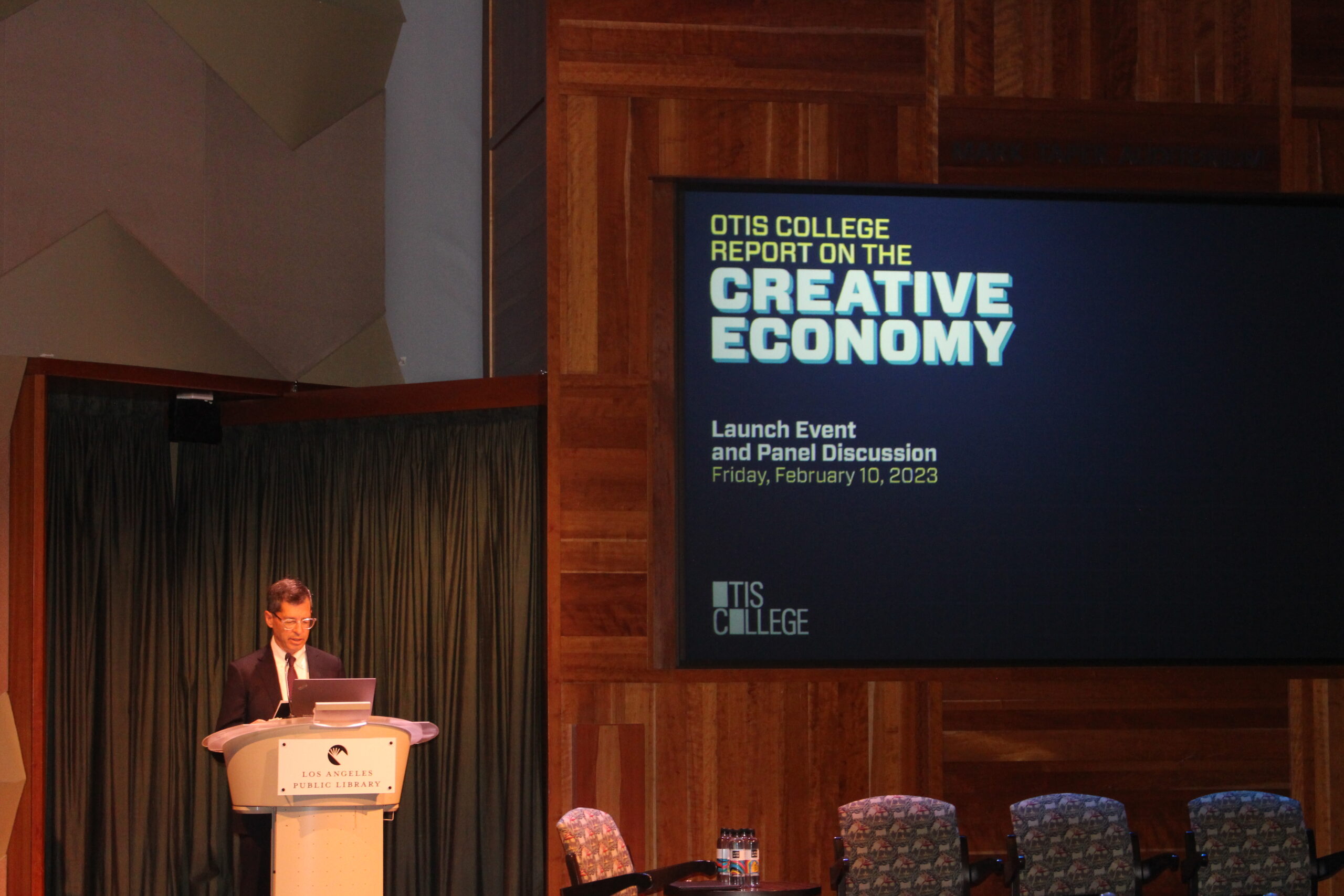READ THE ANNUAL 2023 OTIS COLLEGE REPORT on the CREATIVE ECONOMY HERE
Otis College of Art and Design released the 2023 Otis College Report on the Creative Economy at an event featuring opening remarks from Los Angeles Mayor Karen Bass and Otis College President Charles Hirschhorn. A presentation on this year’s findings was followed by a panel discussion focused on Gaming and the Digital Shift in Art and Design.
I caught up with Madam Mayor to get her thoughts on how to bridge the gap between companies and businesses continuing to economically exclude Minority Business Enterprises from Supplier Diversity opportunities within the Creative Economy. Her response:
The annual Report, first launched in 2007, was produced with CVL Economics and examines the creative economy of Los Angeles and California across five creative sectors—Entertainment, Fine & Performing Arts, Architecture & Related Services, Creative Goods & Product, and Fashion— and eight regions of the state. The Report also contrasts Los Angeles County with New York City, as the creative economic centers of the United States recover from the pandemic.
The data in the latest Report showcases how California’s creative economy finds itself in a moment of profound change. The past three years have been a period of reflection and adaptation, which yielded an important insight: the economic value of the creative sectors extends far beyond the production of artistic and cultural goods or the employment of creative people. Their key economic function is to inspire, leverage, and amplify innovation across the state. This year’s report explores three key themes that define the state of today’s creative economy and will undoubtedly shape its future: talent, technology, and policy.
“The annual Otis College Report on the Creative Economy is an essential resource for the creative sector, policymakers, philanthropy, and the state of California,” said Charles Hirschhorn, President of Otis College of Art and Design. “The Report also aligns with Otis College’s commitment to preparing a diverse community of artists and designers for dynamic careers in California’s established and emerging creative sectors, allowing them to make an impact in their fields and on the world.”
Gaming and the Digital Shift in Art and Design, a panel moderated by Otis College Senior Lecturer Stan Szymanski, explored how innovation that is developed in the creative sector is transforming the overall economy. Panelists included Pelle Sjoenell, Chief Creative Officer, Activision Blizzard; Ron Bernard, Chair of Animation, Otis College of Art and Design; Rachelle Lewis, Owner/President, RLT, Inc; Audrea Topps Harjo, Founder, InclusionFX; and Julia Yan, Head of Growth, TikTok.
Now in its 16th year, the Report has become a benchmark study on the creative economy in California and the impact that creative industries have on the overall economy. The Report is downloaded annually in over 35 countries and serves as a model for documenting creative sectors. Key findings in the 2023 Otis College Report on the Creative Economy include:
• Despite the disproportionate impact of the pandemic on creative sectors, the creative economy outperformed the recovery of the overall economy both statewide and in Los Angeles County. The creative economy directly contributed 14.9% ($507.4 billion) of the state’s $3.4 trillion economy and 7.6% of the state’s jobs.
• Combining direct, indirect (supply chain), and induced (wage spending) impacts, California’s creative economy supported over 5.1 million workers, accounted for $978.6 billion in total economic activity, and generated $194.1 billion in taxes.
• The U.S. is the world’s largest exporter of creative services. In recent years the video game industry has experienced explosive export growth – up by over 54% between 2017 and 2021 – highlighting the growing global consumer demand for California’s creative economy.
• This year’s Report includes gig jobs and finds, for example, that while employment of salaried and self-employed fashion workers has yet to rebound, the number of gig workers grew in both 2020 and 2021.
• The largest creative sector in California, entertainment showed significant employment growth, outperforming the recovery of the creative economy overall. For example, after a 13% drop in 2020, motion picture and video production industry employment in Los Angeles County rebounded +19% from 2020 to 2021.
• Architecture and related services outperformed the creative economy overall and the total economy. Los Angeles County reversed a declining employment trajectory in 2020, which could be partially due to Los Angeles’s successful bid to host the 2028 Olympic games and the resulting mobilization of workers needed to build infrastructure.
The Report also presents recommendations to improve conditions for the creative economy and strengthen its position within the overall economy. Specifically, proposed strategies should address global competitiveness,






























